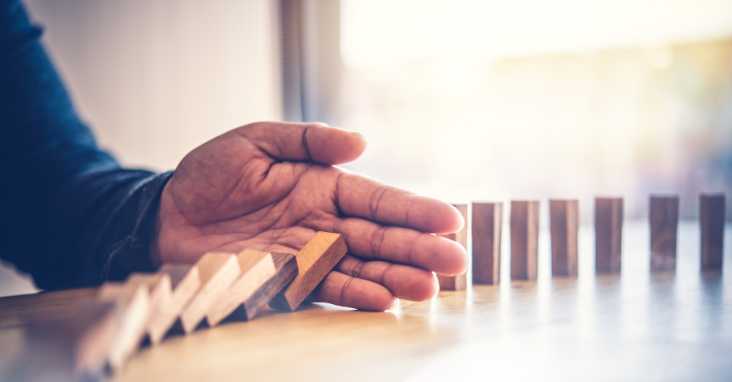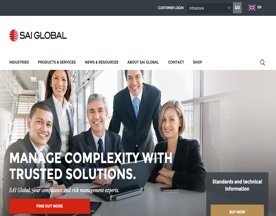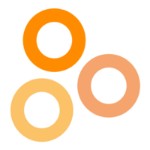If you’re curious about the ins and outs of risk management, you’ve come to the right place. Today, we’re going to explore a question that often stumps many:
“Which is not an example of a risk management strategy?” Learn why ignoring risks, over-generalizing, and believing in full risk elimination don’t work in effective risk management.
Now, this might seem straightforward, but there’s more to it than meets the eye. Risk management is a crucial part of any business or project, and understanding what doesn’t constitute a risk management strategy is just as important as knowing what does. So, grab a cup of coffee, and let’s unravel this puzzle together!
Risk management is like a safety net for your business or project. It’s all about identifying, assessing, and controlling threats. These threats, or risks, could be anything from financial uncertainties, legal liabilities, technology issues, to accidents and natural disasters. Think of risk management as a superhero, always ready to protect your business continuity project from potential harm.
But here’s the kicker – not everything that looks like a risk management strategy actually is one. It’s easy to assume that any action taken to avoid a problem is a form of risk management, but that’s not always the case. Understanding this distinction is crucial for effectively monitoring risks and protecting your project or business.
In our journey today, we’ll start by delving deep into what risk management really entails. We’ll explore its various strategies, dive into some common misconceptions, and, most importantly, pinpoint what doesn’t count as a risk management strategy. Whether you’re a project manager, a business owner, or just someone curious about the topic, this exploration qualitative risk analysis will give you valuable insights and practical knowledge.
So, are you ready to demystify the world of risk management with me? Let’s get started!
Key Points:
- Risk management involves identifying, assessing, and controlling potential threats.
- Not all actions taken to avoid problems are genuine risk management strategies.
- Understanding what doesn’t constitute a risk management strategy is essential.

Understanding Risk Management Strategies
Before we dive into what doesn’t count as a risk management strategy, let’s first understand what does. Risk management strategies are systematic approaches to dealing with threats. They’re like a toolkit, each tool designed for a specific type of problem. These strategies include risk avoidance, reduction, sharing, and retention. Each has its unique way of handling and mitigating risks, and is chosen based on the situation’s specifics.
Risk Avoidance
This is the ‘better safe than sorry’ approach. It involves steering clear of actions that could lead to risk. For instance, a company might decide not to enter a risky market to avoid potential costs or losses.
Risk Reduction
This strategy is about minimizing risk treatment or the potential impact of risks. It’s like wearing a seatbelt – you can’t prevent an accident, but you can reduce its severity.
Risk Sharing
Here, risks are shared with another party. Think of it as teaming up with someone to face a challenge. This often involves insurance or outsourcing certain aspects of a project.
Risk Retention
Sometimes, the best strategy to treat risks is to simply accept the risk. This is common when the cost of mitigating the risk is higher than the risk itself.
Now, with these risk acceptance strategies in mind, let’s shift our focus to what doesn’t qualify as a risk management strategy.
Key Points:
- Risk management strategies include avoidance, reduction, sharing, and retention.
- Each strategy is used based on the specific situation and the nature of the risk.

Common Misconceptions in Risk Management
It’s easy to fall into the trap of misconceptions when it comes to risk management. Some common false beliefs include assuming that any preventive action is a risk management strategy or that risks can always be completely eliminated. Understanding these misconceptions is crucial in distinguishing what is a risk reward analysis and what isn’t a risk management strategy.
Key Points:
- Not all preventive actions are risk management strategies.
- Risks cannot always be completely eliminated.

What Does Not Qualify as a Risk Management Strategy
Now, to the heart of our question: What doesn’t count as a risk management strategy? Here are some examples:
Ignoring the Risk
Ignoring a risk, hoping it won’t materialize, is not a strategy. It’s like closing your eyes and hoping the problem will go away – it won’t, and it’s not a proactive way to handle potential threats.
Over-Generalization
Applying a one-size-fits-all approach to different types of risks doesn’t work. Each risk is unique and requires a specific risk strategy for.
Believing in Full Elimination of Risks
Thinking that you can completely eliminate all risks is unrealistic. The goal of risk management is to mitigate existing risks, not to eradicate them entirely.
Key Points:
- Ignoring risks or hoping they won’t occur is not a risk management strategy.
- Risk management requires specific strategies tailored to each unique risk.
- It’s unrealistic to believe all risks can be fully eliminated.

Software Tools for Risk Management
In today’s digital age, software tools have become invaluable for effective risk management.
These tools are designed to streamline and enhance the risk management process. By utilizing them, businesses can better identify, analyze, and mitigate risks. Here are some specific examples:
Riskalyze
Reason for Use: Riskalyze is renowned for its risk assessment capabilities, particularly in financial services. It helps in quantifying the tolerance levels of clients and aligning their portfolios accordingly. This tool is essential for financial advisors to ensure investment strategies meet the risk appetite of their clients.
LogicManager
Reason for Use: LogicManager is a versatile tool that aids in both identifying risks and prioritizing risks across various business areas. It’s known for its robust risk assessment frameworks and incident management features. Companies use it to ensure compliance and manage enterprise risks effectively.
Resolver
Reason for Use: Resolver excels in incident and risk management for large organizations. Its strength lies in providing insights into the patterns and trends of risks, which helps in making informed strategic decisions. Large enterprises often use Resolver for its comprehensive risk analysis and reporting capabilities.
nTask
Reason for Use: nTask is particularly useful for project-based risk management. It allows teams to identify, assess, and monitor risks directly within their project management workflows. This tool is ideal for project managers looking to integrate risk management with task and project tracking.
SAP Risk Management
Reason for Use: SAP Risk Management offers a holistic approach to risk management, integrating it with business processes. It’s best suited for large enterprises looking for a tool that aligns risk management with corporate goals and compliance requirements.
ISO Risk Analyzer
Reason for Use: This tool is specifically designed for insurance companies. ISO Risk Analyzer provides detailed risk analysis based on geographic location, helping insurers in the development, underwriting and pricing their policies more effectively.
Palisade @RISK
Reason for Use: @RISK is a powerful tool for performing risk analysis using Monte Carlo simulation. It’s widely used across various sectors for financial, operational, and project risks, offering a detailed probabilistic analysis of potential outcomes.
A1 Tracker
Reason for Use: A1 Tracker is suitable for businesses of all sizes looking for a customizable risk management solution. It offers features like risk reporting, analytics, and alerts, making it adaptable to various industry needs.
Key Points:
- Riskalyze is used for financial risk assessment and portfolio alignment.
- LogicManager offers enterprise-wide risk assessment and compliance management.
- Resolver provides insights into risk patterns for large organizations.
- nTask integrates risk management with project management workflows.
- SAP Risk Management aligns risk processes with business objectives.
- ISO Risk Analyzer is tailored for insurance risk based on geographical data.
- Palisade @RISK performs advanced probabilistic risk analysis.
- A1 Tracker offers a flexible and customizable risk management platform.
Each of these tools brings something unique to the table, catering to different aspects of risk management. Whether you’re a small business, a large enterprise, or a specific industry like finance or insurance, there’s a tool designed to meet your risk management needs.

FAQ
What Is Risk Management?
Risk management involves identifying, evaluating, and prioritizing risks followed by coordinated and economical contingency planning and application of resources to minimize, monitor, and control the probability or impact of unfortunate events.
Is Ignoring a Risk a Good Strategy?
No, ignoring a risk is not a risk management strategy. Acknowledging and addressing risks proactively is essential for an effective risk management strategy.
Can Risks Be Completely Eliminated?
It is unrealistic to expect complete elimination of all risks. The objective of risk management is to mitigate risks to an acceptable level, not to eradicate them entirely.
How Does Risk Sharing Work?
Risk sharing involves distributing the burden of risk across different parties. This is often done through insurance policies, partnerships, or outsourcing certain aspects of a business.
What’s the Difference Between Risk Management and Crisis Management?
Risk management is proactive, focusing on identifying and mitigating potential risks before they occur. Crisis management is reactive, dealing with the consequences of a crisis after it has happened.
Are All Risks Negative?
Not all risks are negative. Some risks, when managed properly, can lead to opportunities and positive outcomes. This is often referred to as ‘opportunity risk management’.
How Important Is Risk Assessment in Risk Management?
Risk assessment is a critical component of risk management. It involves evaluating the likelihood and potential impact of identified risks, which is essential for determining the appropriate management strategy.
What Role Does Technology Play in Risk Management?
Technology plays a significant role in implementing modern risk management. It offers tools for risk identification, assessment, monitoring, and reporting, thereby enhancing the efficiency and effectiveness of risk management strategies.
Can Small Businesses Benefit from Risk Management?
Yes, businesses of all sizes can benefit from risk management. For small businesses, risk management can be crucial for survival, as they may be more vulnerable to the impacts of unmanaged risks.
How Often Should Risk Management Plans Be Reviewed?
Risk management plans should be reviewed regularly and updated as necessary, especially when there are significant changes in the business environment, operational processes, or when new risks are identified.
Key Points:
- Risk management is a proactive process to minimize and control risks.
- Ignoring risks is not a strategy; risks cannot be completely eliminated.
- Risk sharing distributes the burden of risk across different parties.
- Risk management is different from crisis management, which is more reactive.
- Not all risks are negative; some can lead to positive opportunities.
- Regular risk assessments are crucial in effective risk management.
- Technology enhances the efficiency of risk management processes.
- Risk management is beneficial for businesses of all sizes.
- Risk management plans should be reviewed and updated regularly.

Conclusion
Understanding what does and does not constitute a risk management strategy is crucial for effectively safeguarding your project or business. While strategies like risk avoidance, reduction risk monitoring, sharing, and retention are pivotal, misconceptions like ignoring risks or believing in their full elimination can be detrimental.
In the complex world of risk management, knowledge is power. By recognizing the common pitfalls and understanding the essence of real risk management strategies, you’re better equipped to navigate through potential threats. Remember, effective risk management is not about eliminating all risks; it’s about understanding them, preparing for them, and mitigating their impact.
So, the next time you’re faced with a decision about managing risks, think back to our chat today. And always remember, the best defense is a good offense – especially when it comes to managing risks.
Key Points:
- Real risk management strategies involve proactive measures to mitigate risks.
- Misconceptions and ineffective practices can lead to inadequate risk management.
- Effective risk management requires understanding, preparation, and proper strategy implementation.












